Cort Lawrence – Infused Light
Posted on May 7, 2024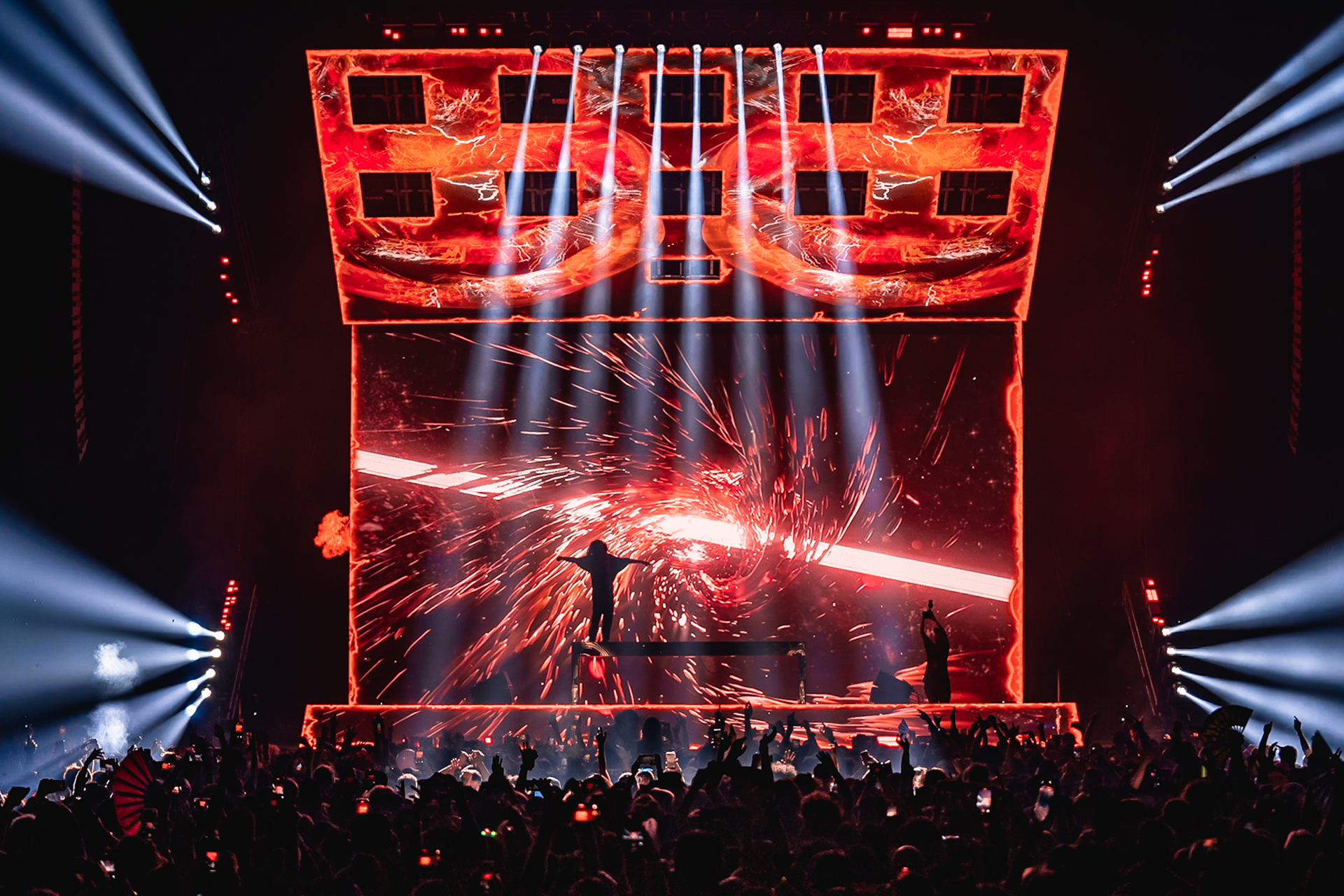
Art is always evolving, but at pivotal times in its history something more profound happens. It is at these moments, such as during the Renaissance, when science revolutionized painting and sculpture, that art transcends its traditional boundaries and reaches into new realms of knowledge to infuse itself with more powerful, game-changing ways to touch the soul.
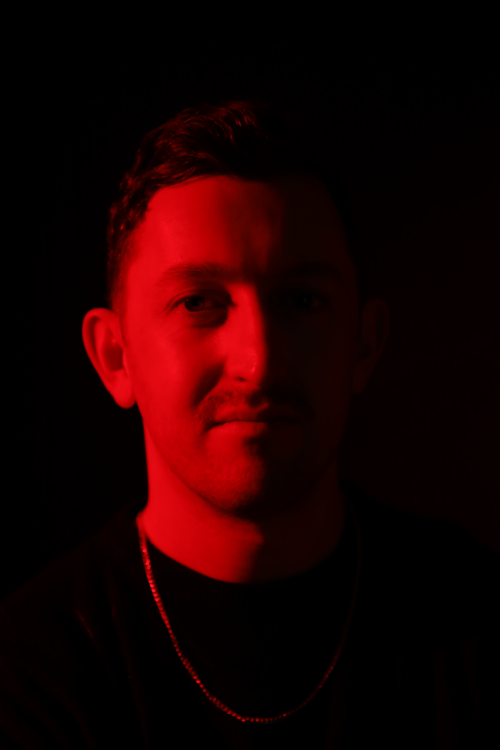
This gifted designer is very much in tune with the process of infusion and how it is currently transforming the world of production design. His appreciation of it was one of the driving forces that led him and Anders Rahm to co-found Raw Cereal in 2022. In the ensuing two years, they and their team have pulled an array of technological influences into their art to contribute to an impressive list of tours.
A recent example is their very advanced production design for Morgan Wallen’s current stadium tour (it began April 4th) that features a massive video wall and four performance areas with different themes.
The dynamic and interactive Morgan Wallen show incorporates much of the latest production technology. But regardless of how technologically sophisticated a project is, Cort Lawrence is always careful to nourish its artistic dimension in all facets of the process, from content creation and animation, to lighting control and production design.
Toward this end, Lawrence will still sometimes even draw out design ideas by hand, to better appreciate things from the traditional perspective. It is only by doing things like this, he believes, that art and technology can fully draw strength from one another in his designs — and, in so doing, realize the true power of infused light.
We have to begin by asking you about your group’s intriguing and evocative name, Raw Cereal. How did you come up with it?“Anders Rahm and I co-founded Raw Cereal after we met at rehearsals for our first project together. We immediately knew we were like-minded and eager to continue growing our careers. While sharing breakfast every morning, the idea of partnering emerged naturally. The inspiration for the name, Raw Cereal, manifested in an instant. We wanted a name that reflected our shared vision of creating something fresh and full of potential. The word ‘raw’ symbolizes the untouched and unprocessed essence of our creativity, while ‘cereal’ represents the diverse blend of ideas and influences that we bring to the table. Together, Raw Cereal embodies the raw energy and creative nourishment that we strive to deliver in our work.”
That was back in March 2022, when you and Anders founded Raw Cereal. At that point, you had been a successful and sought after designer for years. Why did you make this move rather than remain independent?
“The decision to co-found rather than remain independent was driven by a desire for growth, collaboration, and the recognition that I had reached my capacity for what I could create on my own. I strive always to learn something new — and each project presents its own unique challenges. To design bigger and solve bigger problems, I realized that I needed the support of a team. Now, with Raw Cereal my ceiling of creativity is limitless.
“Technology has always been a key part of my process, and at Raw Cereal we leverage a range of tech tools to produce great experiences. Embracing technology has allowed me to expand my toolkit, but I’ve also learned that having a supportive team is invaluable. With a talented and collaborative team by my side, there’s no need to rely solely on technology to fill my creative arsenal. Instead, we work together to tackle challenges, innovate, and create memorable experiences for our clients and audiences.”
On the subject of technology, you’ve noted that it inspires art. Can you tell us a bit about how technology inspires your creative juices?
“Ever since I was young, I’ve been inspired by a quote from John Lasseter at Pixar: ‘Art challenges technology and technology inspires art.’ This concept has been a driving force behind my creative endeavors, highlighting the dynamic relationship between art and technology. It encourages me to seek out inventive ways to blend these elements, constantly pushing the limits. Embracing this philosophy fuels my passion for exploring new frontiers and fostering a culture of innovation within the creative realm.”
So, do you ever have a creative vision and then look (successfully or not) for a technology that can help you realize it?
“Absolutely, my creative visions often drive me to explore technology that can bring them to life. However, this quest goes beyond just finding the right tools; it involves drawing inspiration from diverse creative disciplines like architecture, engineering, film, and art. These outside fields have a wealth of new ways to look at things and help shape my decisions about technology, blending ideas to innovate. This dynamic approach allows me to discover fresh ways of realizing my vision and fosters opportunities for collaboration and interdisciplinary creativity. I often also use artificial intelligence as a guide, leveraging its capabilities to refine and enhance my creative process.”
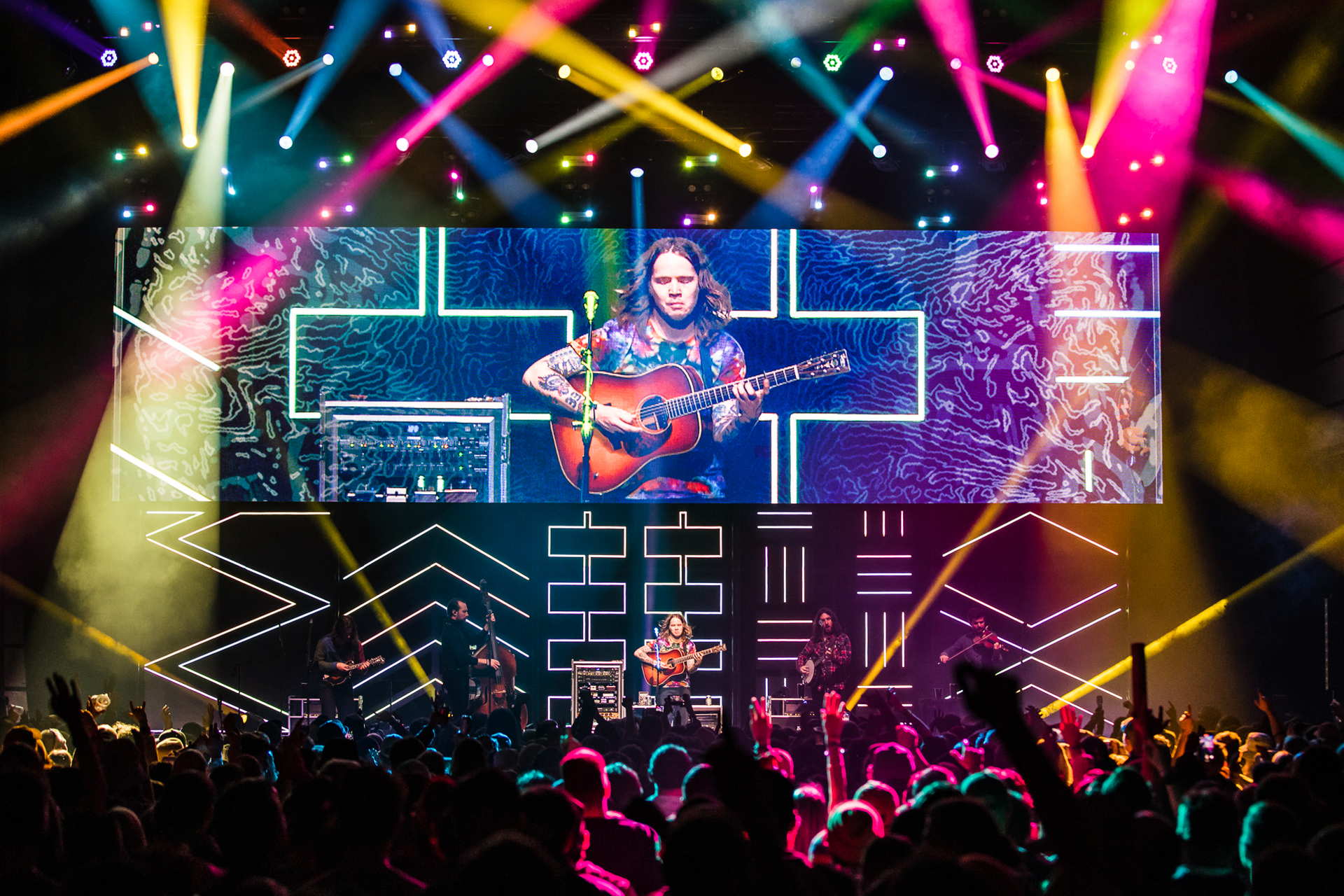
How do you strike a balance between using technology and not over-relying on it so it stifles your artistic vision?
“Finding the right balance between technology and creativity involves seeing technology as a tool to help bring my ideas to life, not something that controls the creative process. I focus first on what I want to create, then choose technology that fits that vision. It’s important to keep the core idea and artistic principles at the center. Sometimes, I go back to basics, like sketching by hand, to make sure the technology doesn’t take over. I also don’t jump on every new tech trend unless it really serves a project’s goals. By keeping my artistic vision in the lead and using technology thoughtfully, I make sure it supports rather than overshadows my creativity.
You’ve been at the forefront of 3D animation and other new technologies as a content creator. How do these immersive environments on stage change the role of lighting fixtures?
“Since teaming up with Anders and diving into the world of 3D animation and content creation for stage shows, I’ve had to rethink my approach to choosing lighting fixtures. The rich colors and effects possible with digital content have pushed lighting technology forward, making me more selective in matching lighting fixtures with the envisioned content colors. This means looking for lighting fixtures that can complement the wide color spectrum and dynamic effects of digital content, creating a seamless blend between the virtual and the physical on stage.
“This shift has made lighting design more complex but also more exciting. It’s not just about lighting the stage anymore. It’s also about enhancing the digital content to create a fully immersive experience. I now work more closely with content creators, picking lighting that works in harmony with the content to bring the artistic vision to life. In essence, the introduction of content into stage design has transformed lighting fixtures from mere tools of illumination into vital components of storytelling and atmosphere creation, demanding a more thoughtful and integrated design approach.”
On the subject of content creation, we were very impressed by the work you and your group did for Match Box 20’s Slow Dream Tour working with Curtis Adams and Sooner Routhier. We also appreciated the work you did with Scott Holthaus for Disturbed’s Take Back Your Life tour. These are some very high-powered creatives in their own right. Do you take a different approach to collaboration, depending on who you’re collaborating with?
“My approach to collaboration is shaped by my early career, where working with other designers taught me so much. Regardless of who I’m collaborating with, I always focus on what I can contribute, and how I can help the team. Successful collaboration is about listening to each other, being open to change, and aiming to do your best while helping others shine as well. This mindset comes from understanding that teamwork and learning from others have been key to my growth in this industry. So, no matter the project, I strive to bring the best out of myself and those around me, believing that it’s the best way to achieve amazing results.”
Looking back on the history on entertainment, is there an artist from the past who’s no longer with us, who you wish you could have been around to light?
“One artist from the past, Chester Bennington of Linkin Park, stands out as someone I would have loved to design lighting for. As a fan of his and their energetic music and the electrifying atmosphere at their shows, the opportunity to enhance Chester’s dynamic performances through lighting or show design would have been incredibly exciting. His ability to connect deeply with audiences, combined with the wild energy of their live performances, would have provided a thrilling challenge and a rewarding creative opportunity.”
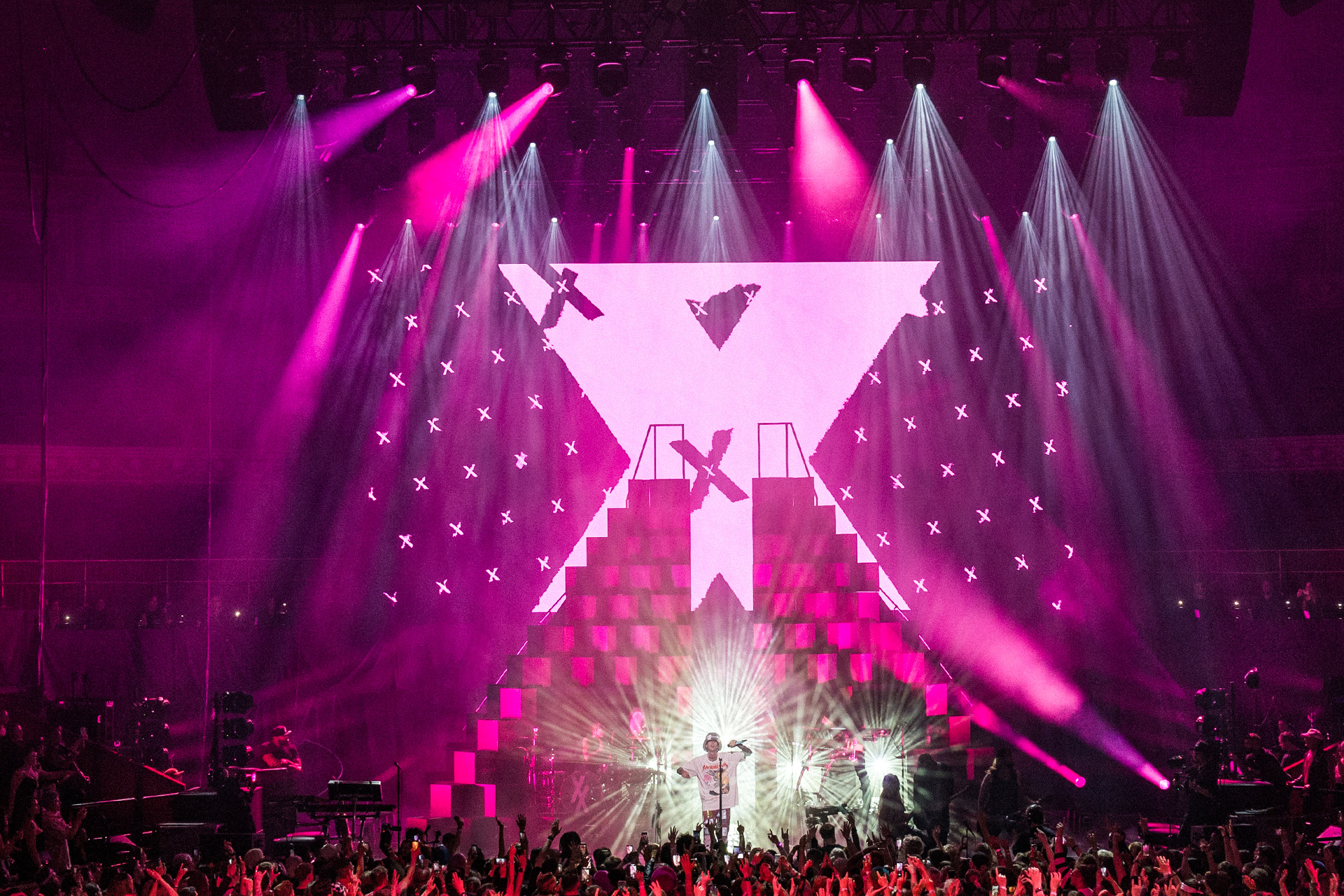
In some of your work, such as Subtronics’ The Anti Fractal Tour, you create some compelling theatrical background with high trims and deeply dimensional backgrounds. What kind of role do you see theatre playing in touring design? “Incorporating theater techniques into live shows not only enhances the depth and visual appeal but also taps into theater’s rich history, making performances more captivating and memorable. Theater’s long tradition of storytelling through visuals and space teaches us to create stages that are not just seen but felt, engaging audiences on multiple levels. By drawing on this heritage, such as using detailed backdrops, manipulating the layout for more depth, and smartly using empty spaces, live performances can transform into extraordinary experiences. It’s about combining the auditory experience of music with the visual storytelling of theater, creating a fully immersive show that resonates with the audience long after it ends.”
In other tours, like the Billy Strings Renewal Fall Tour you added an intense architectural element with clearly defined geometric forms. Can you tell us what your vision there is?
“For the stage design, I drew inspiration from the patterns found in textiles that both the artist and their fans admire, such as rugs and clothing with unique designs. This shared appreciation for textured patterns guided the geometric themes of the stage. Incorporating elements that resonate with both the artist and the audience is a strategy I find deeply enriching, as it fosters a more intimate connection during the performance. By translating these patterns into geometric shapes and designs for the stage, the goal was to create an environment that feels both personal and shared, reminiscent of a communal space decorated with beloved items.”
You’ve created compelling designs for a variety of artists in a variety of genres. Do you have to like a client’s music to do a good job lighting it?
“Even though I don’t need to personally love a client’s music to do a great job with the lighting, being open to all kinds of music really helps. I enjoy all genres and listen to different types throughout my day, which keeps me inspired. This broad taste in music helps me connect better with various artists and their unique visions. It’s important to understand an artist’s style and what they envision for their shows. My job is to make sure the show matches their creative ideas, making the performance visually stunning and meaningful. So, my love for all music genres plays a big role in helping me design a show that complements the artist’s work, ensuring the show resonates well with the audience, no matter the type of music.”
What are the most important traits you think a designer should have?
“A great designer brings together a mix of creativity, technical skills, and the ability to work well with others. They start with creative ideas that are fresh and unique, and use their technical knowledge to turn those ideas into reality. Paying close attention to details and solving problems creatively are key parts of making a design work. Good communication helps designers understand what clients want and share ideas with their team. Being patient and persistent is important too, because creating something great can take time, and often involves overcoming challenges.
“Designers need to love what they do, always look for new inspiration and be open to feedback that will improve their work. Being flexible and able to adapt to changes, knowing how to use the latest technology, and being skilled in different methods and materials make a designer versatile and capable of bringing any idea to life. All these qualities come together to make you successful as a designer, allowing you to create work that’s not just good-looking, but also meaningful and effective.”
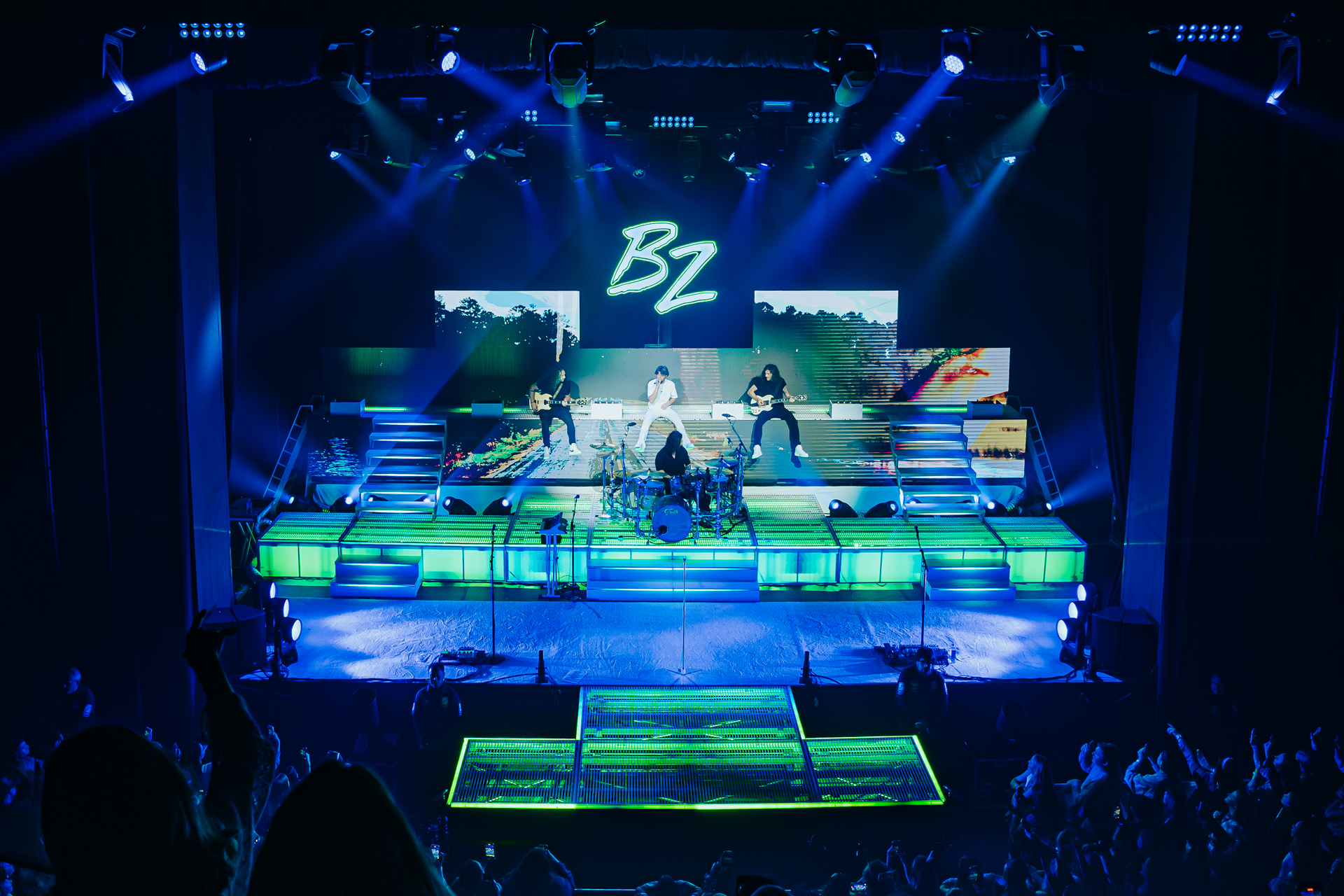
Has the growing importance of technology changed these traits?
“Just as the Pixar quote suggests, art and technology constantly influence each other. While technology evolves, human creativity remains crucial. Creative professionals bring their experience, cultural understanding, and aesthetic sense to their work, greatly impacting AI-generated content. While AI can produce impressive results, it lacks the emotional depth of human creativity. The creative process involves experimentation, refinement, and personal insight.”
How did you get started in design?
“I started my design career working behind the scenes as a render artist, helping other designers visualize their ideas. Realizing I needed more hands-on experience to improve my work, I took the opportunity to join some of the biggest production tours. This experience was eye-opening, teaching me the nuts and bolts of designing live shows and how to bring ideas to life on stage. After learning from these real-world experiences, I began to take on my own design projects. Starting with a few clients, I applied everything I learned on the road to building my own shows. This journey from rendering to designing taught me not just about making things look good, but about the practical side of bringing designs to life.”
What do you think you would have done if you didn’t become a designer?
“If I hadn’t pursued a career in design, I envision myself exploring other creative avenues. One possibility would be delving into architecture, a field that captivates me with its fusion of artistic expression and practical functionality. I’ve always been drawn to the intricate details and diverse architectural styles found in buildings worldwide. Imagining myself as an architect, I would relish the opportunity to contribute to the creation of iconic structures, such as stadiums and arenas, that host the vibrant events that I’ve been involved with. This alternative path would still fulfill my passion for creativity while allowing me to leave a tangible mark on the built environment.”
After looking back on a show what ‘s the thing that you are typically most proud of?
“When I reflect on a show, what makes me most proud is how all the design elements seamlessly come together to create an unforgettable experience. Whether it’s the lighting, visuals, stage setup, or technology, seeing everything work in harmony to captivate the audience is incredibly rewarding. Knowing that the design exceeded expectations and left a lasting impression adds to that satisfaction. It’s about creating transformative experiences through design, and that’s what I’m most proud of.”
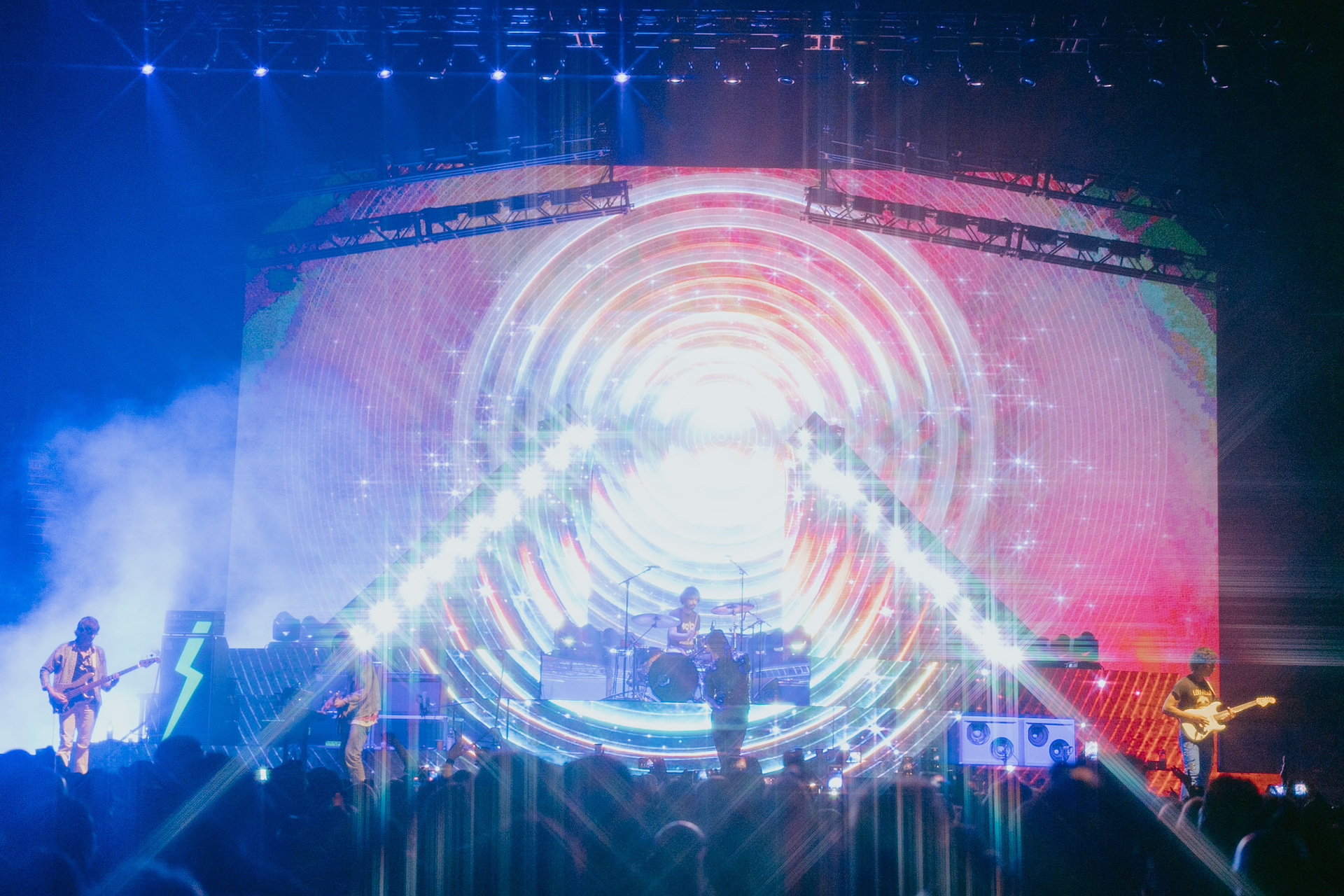
You have a very large and impressive project designing for Morgan Wallen’s tour. Do you want to share any details with us?
“Morgan Wallen’s latest stadium tour design is a significant step forward in innovation and concert experience. The stage features a massive video wall and four performance areas with different themes and effects driven by the setlist. With two B-stages, a MW video floor thrust, and a C-stage in the audience, the show is dynamic and interactive. It perfectly balances various design elements, including video, lighting, scenic effects, fire, pyrotechnics, LED bands, and more.
“Our vision for this new show design is to create an immersive experience that reflects his unique style and energy. We’re focusing on a minimalist stage with a massive video wall, highlighting Morgan and his music. The design incorporates thematic elements and effects to enhance the emotional impact of his songs. Overall, it’s about capturing Morgan’s authenticity and creating unforgettable moments for his fans.
That design is very broad. What were the challenges you faced in turning it into reality?
“A major obstacle we worked through involved providing a show to a 270-degree audience and entertaining an entire stadium all at once yet providing an intimate level of detail. This required careful consideration of sightlines, audio distribution, and ensuring that every audience member felt fully engaged and included in the experience. It was a complex challenge that demanded innovative solutions and precise execution to deliver a seamless and immersive show for everyone in attendance.”
What is the one thing, you’d like people to know about you as a designer?
“That would be my unwavering commitment to creating meaningful and impactful experiences. Every design I craft is infused with passion, creativity, and attention to detail, with the ultimate goal of leaving a lasting impression on both clients and audiences. I approach each project with a blend of innovation and practicality, constantly pushing boundaries while ensuring the design remains both functional and inspiring. At the core of my work lies a deep-seated belief in the power of design to evoke emotions, tell stories, and transform spaces.”